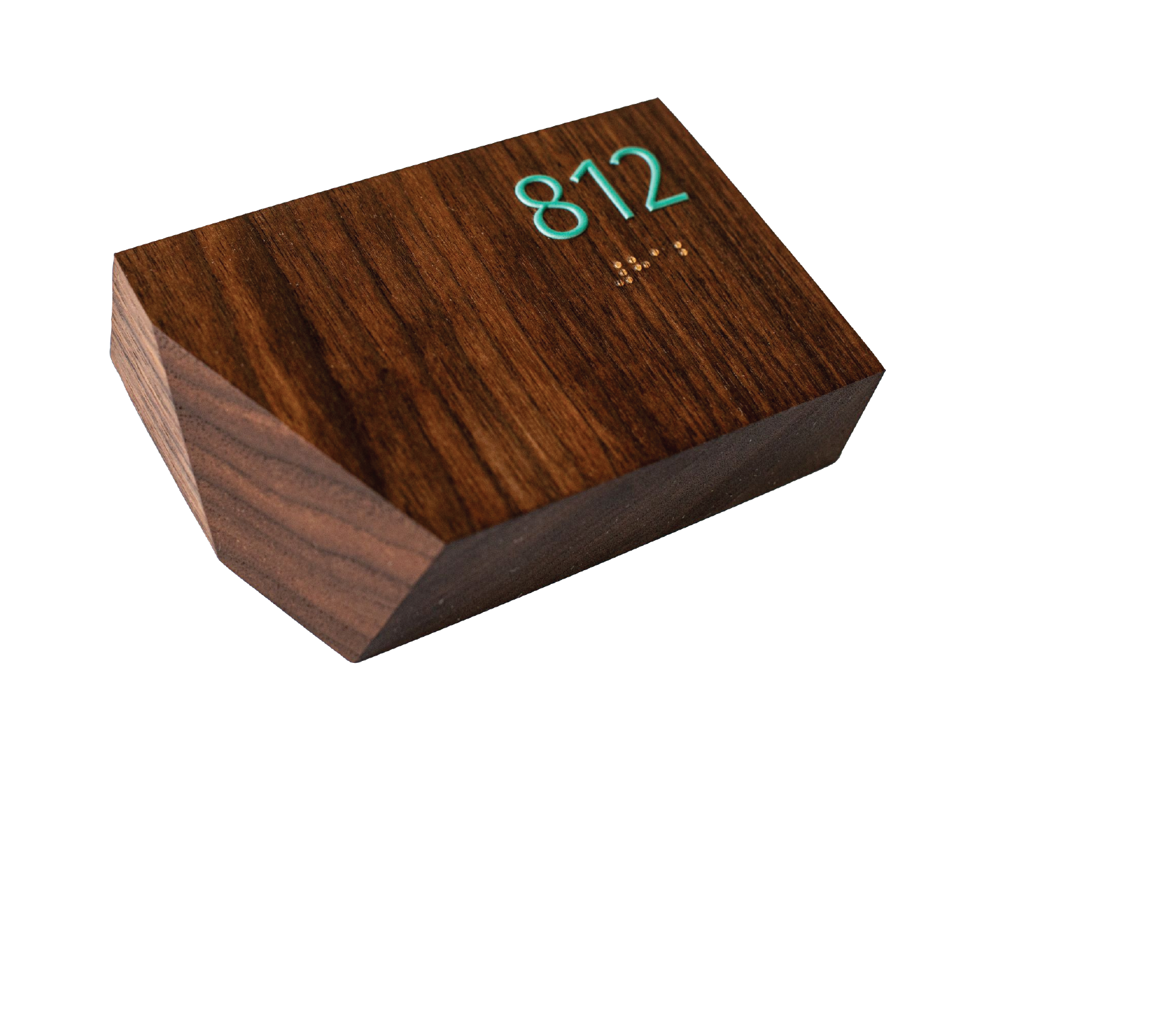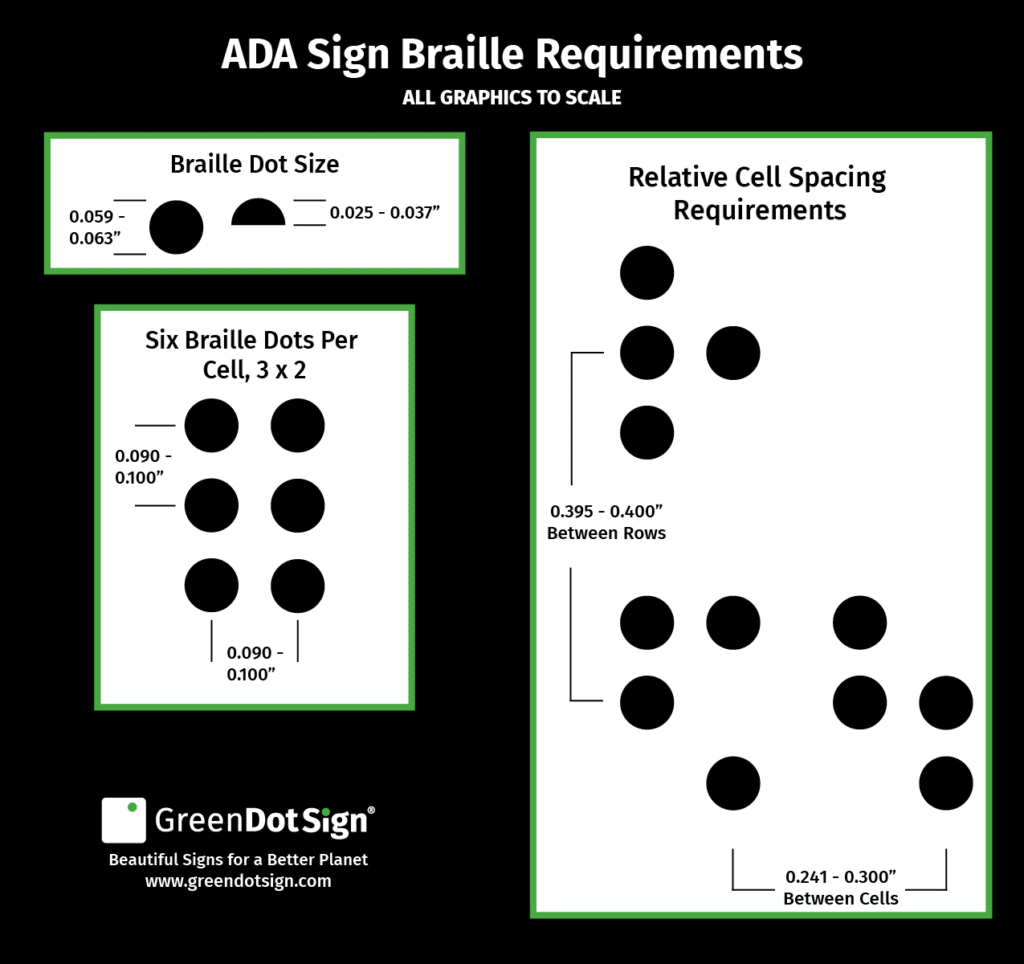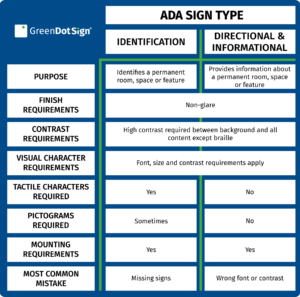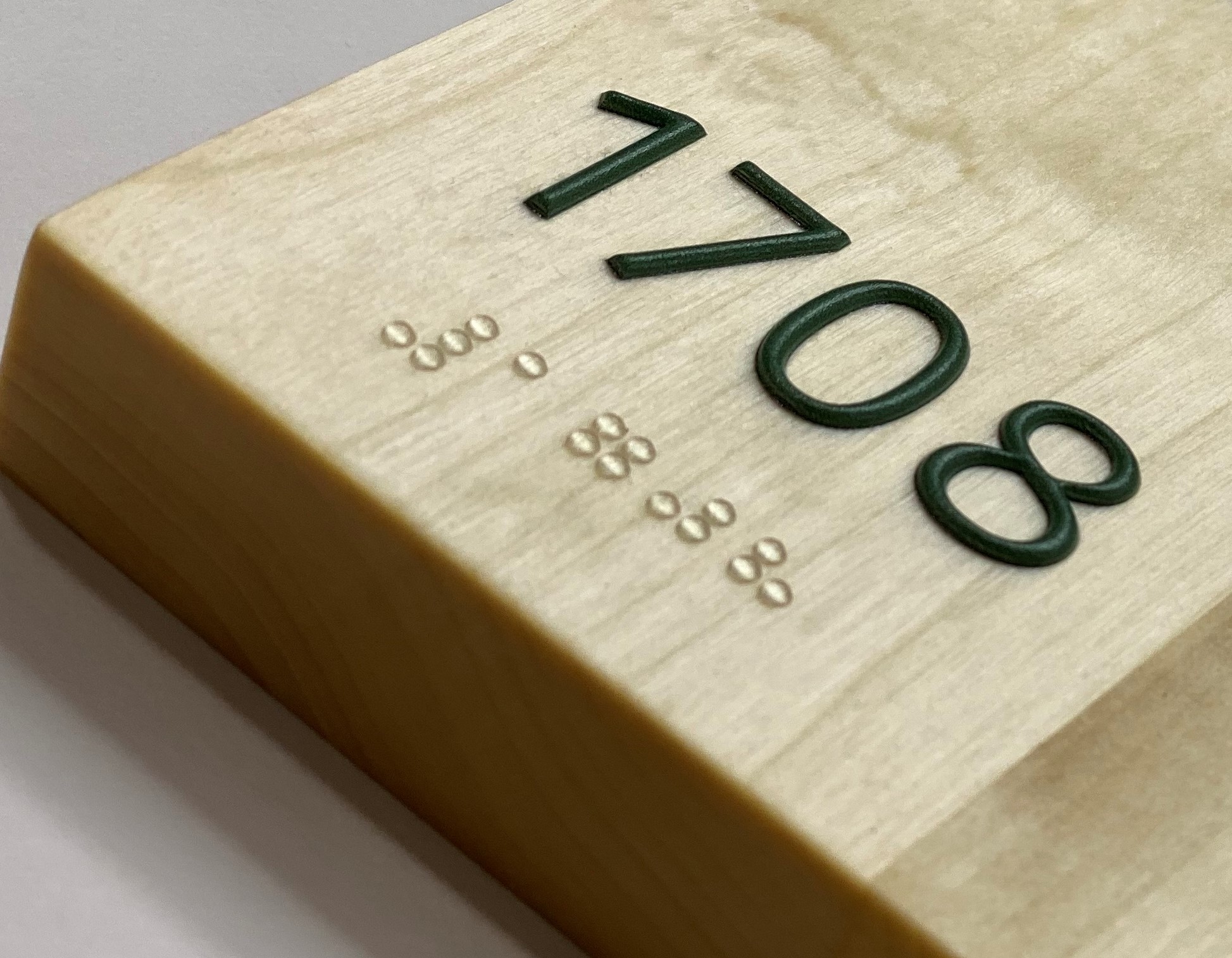DO ALL ADA SIGNS NEED BRAILLE?
No, there are a few types of ADA required signs that do not need to contain braille.
ADA braille requirements vary depending upon the purpose of a sign. ADA signs identifying permanent rooms or spaces in U.S. public buildings are required to be tactile signs, including raised letters and braille.
However, signs directing to accessible features are not required to contain braille, though in most cases ADA visual character requirements apply.
Green Dot Sign® has thoroughly reviewed the 2010 ADA Standards for Accessible Design and includes braille on all braille signage that require it unless specifically directed otherwise.
To maintain a uniform look and feel across a facility’s interior office signage, tactile braille is often included on directional and informational signage even when it is not legally required.
This custom room number braille sign has raised lettering in teal and clear braille on a walnut sign base.







